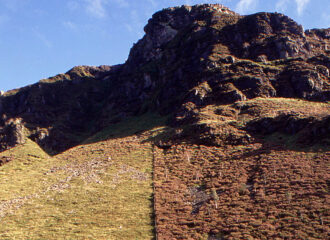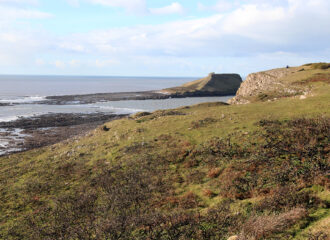The European dry heath habitat is listed on Annex I of the EC Habitats and Birds Directive and protected at the European level. It typically occurs on dry/free-draining acidic to neutral soils on the coast and in upland situations. The habitat tends to be co-dominated by bell heather (Erica cinerea), European gorse (Ulex europaeus) and ling (Calluna vulgaris).
Ericoid species co-dominate the vegetation, typically comprising a mix of ling (Calluna vulgaris), gorse (Ulex spp.), bilberry (Vaccinium spp.) or bell heather (Erica cinerea). Dry heath is generally considered to be semi-natural, but is derived from woodland as a consequence of grazing and burning. Most dry heaths are used for grazing – or formerly as grouse moors, though many coastal heaths are now undermanaged or abandoned and being replaced by gorse (Ulex europaeus) scrub, primarily due to the increased use of coastal paths by tourists. Conversely, in areas where heaths are managed for grazing animals, annual burning can be a major problem for the biodiversity associated with the habitat as the mammal, bird and invertebrate populations diminish and disappear as a consequence.
Dry heath also poses a dilemma for rewilding practitioners. If management is removed and nature is allowed to take its course, coastal heaths would soon be replaced by scrub and upland heaths, particularly where adjacent to conifer plantations, would most likely be replaced by non-native stands of woodland.




